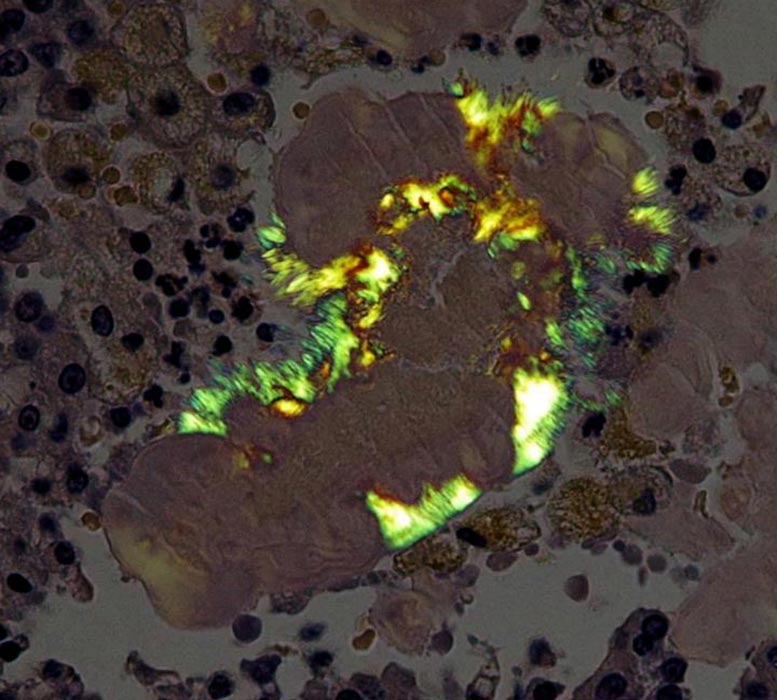The researchers published their results on October 15th, 2019, in Amyloid, The Journal of Protein Folding Disorders. Amyloidosis is a disease group showing the deposition of amyloid that is a misfolded protein originating from the host protein, i.e., in this case LBP. For amyloidosis, unfortunately, no cure is available, but treatments can help symptoms and produce less amyloid protein. “When looking into mammary glands of old rats, interestingly we very often saw needle-shaped amyloid,” said Tomoaki Murakami, DVM, Ph.D., the first and corresponding author on the paper and Associate Professor in Laboratory of Veterinary Toxicology, Cooperative Department of Veterinary Medicine at TUAT. Amyloid deposition was actually observed in 83% of aged female rats. “We are very surprised at this finding, because it was known that in rats amyloidosis is extremely rare and that spontaneous rat amyloidosis had not been reported for about half a century.” In contrast to old rats, in younger rats, amyloid deposition was not at all observed. The difference between the aged and youth was the presence or absence of an intra-mammary gland structure called “Corpora amylacea,” which are round, glass-like substances, meaning “starch-like bodies” in Latin. “We found that the needle-shaped amyloid was always formed on the surface of Corpora amylacea,” said Murakami. “After we carried out the histological, immunohistochemical, ultrastructural, and proteomic analysis, LBP was identified as a prime candidate for amyloid protein,” according to Murakami. LBP is known to be involved in innate immunity and is expressed in various animal species including humans. “We would like to point out that we discovered novel amyloidosis in rats and that Corpora amylacea formation during aging is its risk factor. In humans, iatrogenic amyloidosis and transmissible amyloidosis have been reported as non-spontaneous amyloidosis. We expect that this study provides useful information for predicting the accidentally induced amyloidosis in humans that may occur in the future,” Murakami added.
Reference: “Needle-shaped amyloid deposition in rat mammary gland: evidence of a novel amyloid fibril protein” by Tomoaki Murakami, Keiichi Noguchi, Naomi Hachiya, Fuyuki Kametani, Masayoshi Tasaki, Satoshi Nakaba, Yukiko Sassa, Taro Yamashita, Konen Obayashi, Yukio Ando, Masao Hamamura, Takeshi Kanno and Kazufumi Kawasako, 15 October 2019, Amyloid.DOI: 10.1080/13506129.2019.1675623 This research was partially supported by JSPS KAKENHI (Grant Numbers 16H05027 and 17K17702) and TUAT President’s Discretionary Funding to support the launch of next-generation research project.
